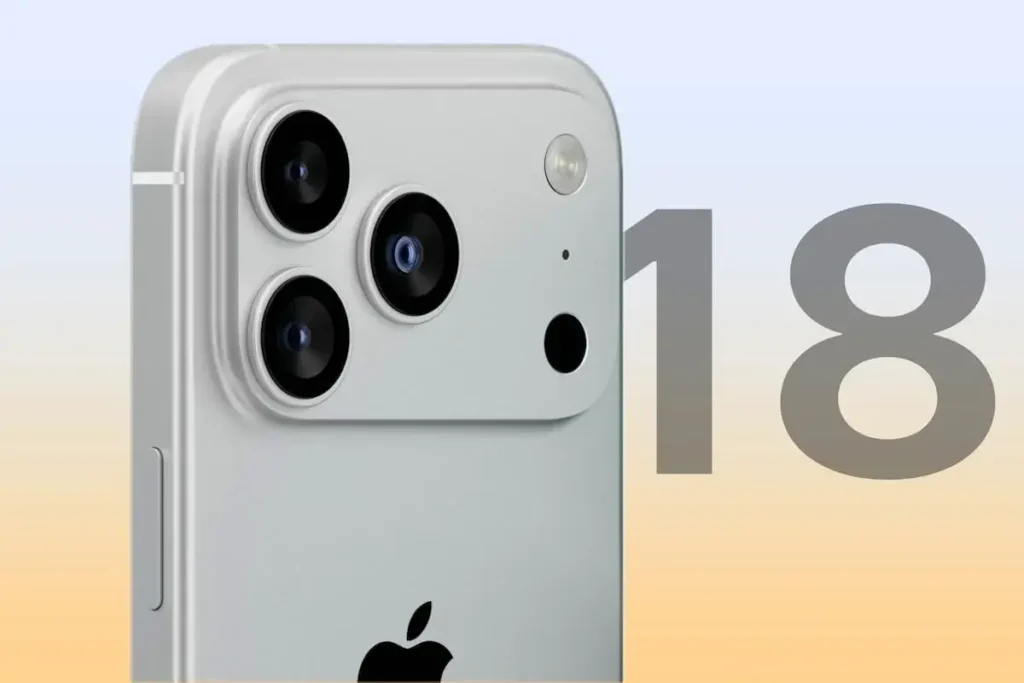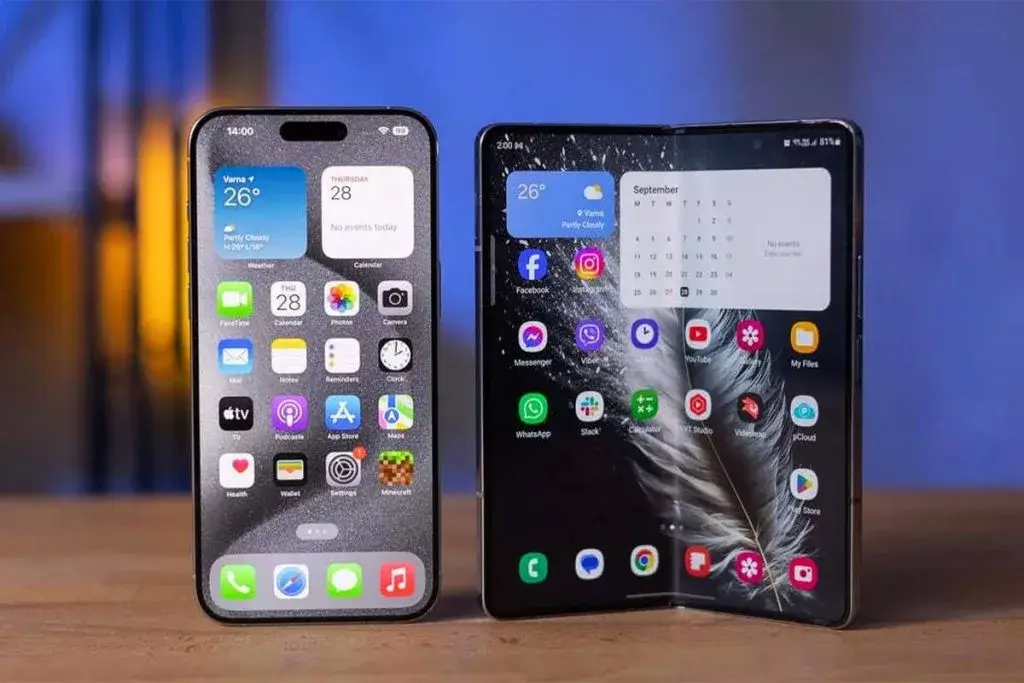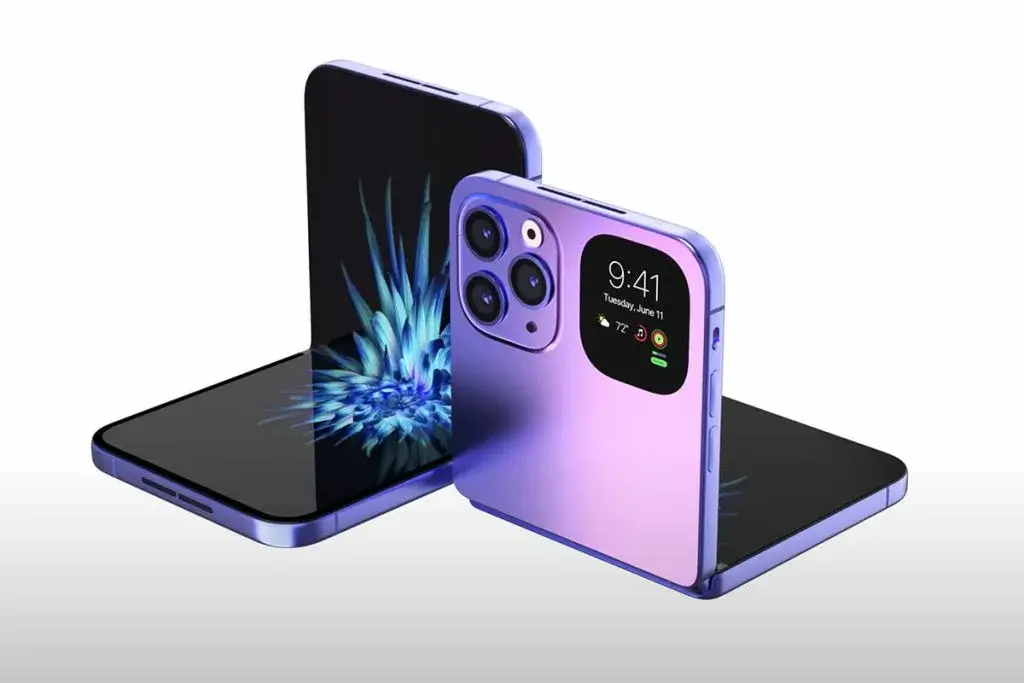iPhone 18 rumors are already circulating among industry insiders. The questions of what the iPhone 18 looks like and when it will be released are already being answered in the insiders’ early speculation and leaks. The focus is on 2026, where Apple is preparing new smartphones. The iPhone 18 is expected to continue its evolution, but the main event will be the folding iPhone Fold. This article will cover the main expectations: what the iPhone 18 looks like, its features that shape its design, and the details of the revolutionary folding iPhone. Let’s explore what the future iPhone 18 will look like.
Contents
What will the iPhone 18 look like?

The expectations surrounding the iPhone 18 are shaping up to be a device with a number of notable evolutionary steps. While there are many innovations that are expected, these are the ones that stand out as the most significant differences in Apple’s upcoming flagship. Here are some of the features that may exceed the current Pro versions of the iPhone 18:
Face ID under the Screen Plane
One of the most talked-about expected changes in the design of the 18th iPhone is the transfer of the entire Face ID system under the display surface. According to insider reports, Apple plans to place all the necessary face recognition sensors directly under the screen matrix. This will finally eliminate the Dynamic Island cutout, bringing us closer to the long-awaited concept of a smartphone with a bezel-less display. However, the screen sizes of the Pro versions will remain the same: 6.3 inches for the base Pro and 6.9 inches for the Pro Max, with a 1.5K resolution. It is important to note that the under-display Face ID will remain exclusive to the iPhone 18 Pro lineup. It is also important to note that the iPhone 18 and iPhone 18e models will retain the familiar Dynamic Island. The company does not intend to abandon the reliable 3D facial authentication in favor of the under-display fingerprint scanner. Insiders have also mentioned the potential introduction of a new ultra-thin iPhone Air lineup. This lineup will start with the iPhone 17 Air model. This also means the arrival of its successors, which will complement the new iPhone 18 lineup.
Camera
Thanks to the space freed up by Face ID, the front camera in the iPhone 18 will have a new, more compact placement. This will affect the appearance of the iPhone 18 from the front. The camera will move to the top-left corner of the screen, taking the form of a minimalist dot. This is a familiar design from many modern Android smartphones. This solution visually frees up screen space. However, it remains to be seen how this will affect the overall appearance of the iPhone 18.
Variable aperture
Significant improvements can also be expected from the main camera of the iPhone 18. The key innovation for the 48-megapixel sensor will be the variable aperture. This feature will allow users to manually adjust the amount of light that enters the camera sensor. The practical benefit lies in more precise control over the depth of field and potential improvements in image quality. This is particularly useful for capturing images in challenging lighting conditions, as well as in low-light environments or when artistic blurring is desired.
Samsung Image Sensor

n addition, Apple’s transition to using a new three-layer image sensor is an important milestone. Developed by Samsung, this technology, known as PD-TR-Logic, offers significant advantages. These include increased sensor sensitivity, expanded dynamic range, and reduced digital noise in photos. Given that Apple has been using Sony sensors, this could represent a significant improvement in image quality.
A20 Chip
Additionally, the heart of the iPhone 18 will be the new Apple A20 processor . Its special feature is the production of an advanced 2-nanometer technological process by the Taiwanese giant TSMC. Also, this transition promises a significant increase in productivity (by 15%) and a significant increase in energy efficiency (up to 30%.) Compared to the A19 (3nm) chip, which is likely to be installed in the iPhone 17. Therefore, it directly affects the speed and battery life of the new iPhone 18.
Apple’s own C2 modem
In the field of communications, an important step towards greater Apple independence is expected. Instead of Qualcomm modems, the iPhone 18 is likely to feature Apple’s next-generation C2 communication module. This module offers mmWave support, which is not only available in the United States but also in other regions. mmWave technology promises faster data transfer speeds and improved stability in next-generation 5G networks.
The first foldable iPhone

In parallel with the evolution of classic smartphones, September 2026 could be a historic date. It could be the release of Apple’s first-ever foldable iPhone. We’ve already seen the anticipation surrounding its debut. Additionally, expectations suggest that the 2026 iPhone will feature flagship models and introduce a revolutionary design and construction.
Design
The device, which is expected to be called the iPhone Fold (or “iPhone Fold”), is expected to be about 4.5 mm thick when unfolded, which is part of its unique design. This will be achieved by replacing the Face ID system with a fingerprint scanner integrated into the power button (Touch ID). The device is expected to be made of titanium, and the hinge mechanism may use elements made of “liquid metal” (an amorphous alloy), which is known for its durability. We can already imagine what the iPhone 18 will look like, but no one knows what it will actually look like.
Display
The foldable iPhone will be equipped with two screens. The external screen (cover display), which is approximately 5.5 inches in size, will provide basic functionality without the need to unfold. The main internal screen, when unfolded, will offer a diagonal of approximately 7.8 inches. More precisely, according to the latest data, it is 7.76″ with a resolution of 2713 x 1920 pixels and an aspect ratio close to 4:3. This positions the iPhone 16 Fold (the tentative name) between the iPhone Pro Max (6.9″) and the iPad mini (8.3″), essentially offering a compact tablet that can be carried in a pocket. The front-facing camera for video calls on the main screen will be a small dot at the top, similar to the new solutions for the iPhone 18. The presence of a Face ID camera on the external screen is still under consideration.
Features of operation
The 4:3 aspect ratio of the internal screen has its own nuances. However, it is excellent for reading, web surfing, working with documents, and some applications. Subsequently, for viewing widescreen video (16:9, 18:9, 21:9), this ratio means the appearance of noticeable black margins at the top and bottom of the image. Thus, for frequent viewing of movies or YouTube in traditional formats, the regular iPhone 18 model may be a more practical choice than the foldable iPhone.
Solving the crease problem
One of the main technological challenges of folding iPhones is minimizing the visible crease (fold) on the flexible screen. According to reputable sources (including Ming-Chi Kuo), Apple has made significant progress in this area. The internal display of the iPhone Fold is expected to be less visible than many competitors. The use of liquid metal in the hinge (which Apple has previously used in SIM card trays, for example) is part of the solution to enhance the durability and reduce the visibility of the crease in the iPhone 18 model. One thing is for sure: it will definitely have a positive impact on the overall appearance of the iPhone 18.
Camera and autonomy
In addition to the front-facing camera, the device will have a rear camera with two main sensors. An expanded set of AI-powered features optimized for the new iPhone Fold is also expected. Apple engineers are focusing on optimizing the power consumption of the iPhone Fold. It is already known that the display driver (IC-driver) has been improved to reduce the energy consumption of the display matrix. However, the question of the battery type remains open: although insiders note the potential of denser silicon-carbon anode batteries (as in the OPPO Find N5 with its 5600 mAh battery at a thickness of 4.2 mm), there is currently no specific data on the battery of the foldable iPhone.
Cost
The estimated price of Apple’s first clamshell will be around $2,000-2,200. This will make the iPhone Fold the most expensive iPhone at the time of release. Therefore, in Cupertino, according to rumors, they are considering this device not only as a new iPhone 18. Moreover, as an experimental platform for flexible display technologies that can later be used in folding versions of iPads, MacBooks and other gadgets.
Development status
The foldable iPhone reportedly entered the NPI (New duct Introduction) phase at Foxconn factories. This indicates that mass production is expected to begin in the fourth quarter of 2026. The iPhone Fold is expected to be released in 2027, later than the main iPhone 18.
Folding iPad
The information background around Apple’s foldable devices is not limited to smartphones. Additionally, there are reports of ongoing development of a hybrid device that combines features of an iPad and a MacBook, but with a flexible screen. This also demonstrates Apple’s long-term plans in this area, following the introduction of the iPhone Fold.
The concept
Unlike traditional laptops, the keyboard in this model will not be physical. Instead, the lower half of the large flexible OLED panel will take on this role, transforming into a touch keyboard when needed. The overall screen diagonal in the unfolded state can range from 18.8 to 20.2 inches. It will be interesting to see how Apple designs the foldable iPad differently from the iPhone 18.
Platform
It is assumed that such a device will function under the macOS operating system, adapted for efficient operation with touch input, pen (Apple Pencil), and with a virtual keyboard. In particular, some changes in the interface of future versions of macOS (for example, hints were mentioned in the context of macOS 16) may lay the foundation for a new model.
Deadlines
Insiders estimate that the estimated window for bringing such a device to the market is quite wide, from 2026 to 2028, which highlights its still-conceptual status and the complexity of its development.
Conclusion
The fall of 2026 will be a landmark year for Apple. The new iPhone 18 Pro will bring powerful enhancements, including a under-display Face ID, an advanced camera, a 2nm chip, and a custom modem. Additionally, the announcement of the foldable iPhone (iPhone fold) will mark a new chapter. This means that the foldable iPhone, with its unique design, will not only be the most expensive iPhone of 2018. It will also serve as an important experimental platform, showcasing the future of Apple technology. The success of the iPhone Fold will determine the fate of foldable iPhones and accelerate the development of flexible iPads/MacBooks. The iPhone 18 demonstrates a dual strategy: evolution and a bold leap. Finally, we will wait for more accurate news about the appearance of the iPhone 18.
Also, if you are planning to buy a new iPhone 17 in 2025, we recommend that you read our article What will the iPhone 17 be like, where we provide detailed information about the innovations and features of the upcoming model!
